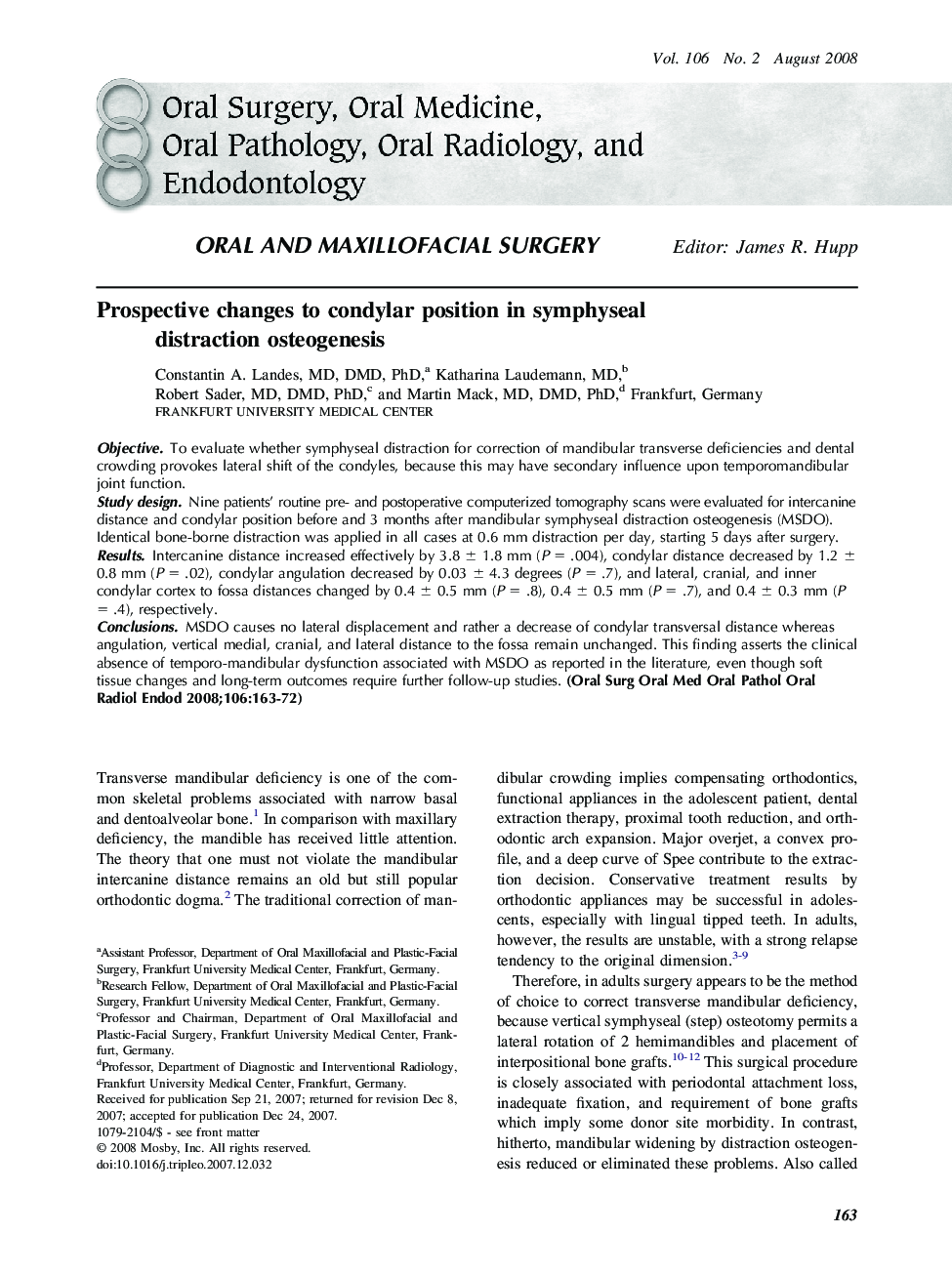| کد مقاله | کد نشریه | سال انتشار | مقاله انگلیسی | نسخه تمام متن |
|---|---|---|---|---|
| 3168549 | 1199419 | 2008 | 10 صفحه PDF | دانلود رایگان |

ObjectiveTo evaluate whether symphyseal distraction for correction of mandibular transverse deficiencies and dental crowding provokes lateral shift of the condyles, because this may have secondary influence upon temporomandibular joint function.Study designNine patients' routine pre- and postoperative computerized tomography scans were evaluated for intercanine distance and condylar position before and 3 months after mandibular symphyseal distraction osteogenesis (MSDO). Identical bone-borne distraction was applied in all cases at 0.6 mm distraction per day, starting 5 days after surgery.ResultsIntercanine distance increased effectively by 3.8 ± 1.8 mm (P = .004), condylar distance decreased by 1.2 ± 0.8 mm (P = .02), condylar angulation decreased by 0.03 ± 4.3 degrees (P = .7), and lateral, cranial, and inner condylar cortex to fossa distances changed by 0.4 ± 0.5 mm (P = .8), 0.4 ± 0.5 mm (P = .7), and 0.4 ± 0.3 mm (P = .4), respectively.ConclusionsMSDO causes no lateral displacement and rather a decrease of condylar transversal distance whereas angulation, vertical medial, cranial, and lateral distance to the fossa remain unchanged. This finding asserts the clinical absence of temporo-mandibular dysfunction associated with MSDO as reported in the literature, even though soft tissue changes and long-term outcomes require further follow-up studies.
Journal: Oral Surgery, Oral Medicine, Oral Pathology, Oral Radiology, and Endodontology - Volume 106, Issue 2, August 2008, Pages 163–172